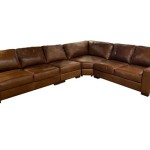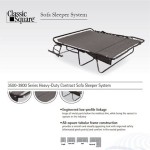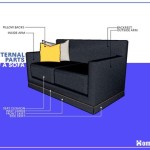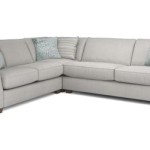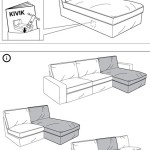Typical Sofa Seat Back Height: A Detailed Examination
The sofa is a ubiquitous piece of furniture, found in living rooms, offices, and reception areas globally. Its primary function is to provide comfortable seating. A crucial aspect of sofa design that directly impacts comfort and ergonomics is the seat back height. Understanding the typical sofa seat back height, its variations, and the factors influencing its optimal measurement is essential when selecting a sofa for a specific space and purpose. This article will explore these aspects in detail.
Seat back height refers to the vertical distance from the seat cushion's surface to the top of the sofa's backrest. This measurement significantly affects the level of support provided to the user's back, neck, and shoulders, ultimately influencing the overall comfort and posture. A seat back that is too low may not offer sufficient support to the upper back and shoulders, leading to slouching and potential discomfort over prolonged periods. Conversely, a seat back that is too high might force the user into an unnatural posture, potentially causing neck strain or limited movement.
While there isn't a universally fixed standard for sofa seat back height, generally accepted ranges exist based on common design practices and ergonomic considerations. These ranges are influenced by factors like the overall style of the sofa (e.g., modern, traditional, mid-century), its intended use (e.g., lounging, formal seating), and the typical height of the intended users. Therefore, understanding these ranges and the factors contributing to them is paramount for making an informed decision.
Typical Seat Back Height Ranges
The most common range for sofa seat back heights falls between 17 and 21 inches (approximately 43 to 53 centimeters). This range provides a balance between support and aesthetics, generally considered suitable for a wide range of users and activities. Sofas within this height bracket usually offer adequate lower back support and allow for a relatively upright seating posture, suitable for conversation or reading.
Sofas with lower seat back heights, often falling below 17 inches, are typically found in modern or minimalist designs. These sofas prioritize aesthetics over maximum back support, often featuring a sleek, low-profile silhouette. While visually appealing, these sofas may be less comfortable for extended periods, particularly for individuals requiring significant back support. They are often better suited for shorter sitting sessions or as secondary seating options.
On the other hand, sofas with higher seat back heights, extending beyond 21 inches, are more commonly seen in traditional or formal designs. These sofas aim to provide enhanced back and neck support, often featuring taller backrests that extend to the shoulders or even the head. These are often preferred for individuals who prioritize comfort and support, especially those with back issues. These sofas are well-suited for activities like watching television or longer periods of relaxation.
It's important to note that these are just general guidelines, and variations exist. Some sofas may deviate from these ranges based on specific design considerations or ergonomic features. For example, a sofa with adjustable headrests or lumbar support may have a lower overall back height but still offer excellent support due to these additional features.
Factors Influencing Optimal Seat Back Height
Several factors influence the determination of optimal seat back height for a sofa. Understanding these factors is crucial for selecting a sofa that meets specific needs and preferences. Ergonomic principles play a central role, aiming to ensure proper spinal alignment and reduce the risk of discomfort or injury. The intended use of the sofa also significantly influences the ideal back height, as different activities require varying levels of support.
Ergonomics: The primary ergonomic consideration is the support provided to the lumbar region (lower back). A well-designed sofa should offer adequate lumbar support to maintain the natural curvature of the spine. This support helps prevent slouching and reduces strain on the back muscles. If the seat back is too low and doesn't extend to the lumbar region or provide adequate support there, it can lead to poor posture and discomfort. Similarly, the upper back and shoulder support is important depending on the intended use. For instance, if the sofa is primarily used for relaxation, a higher backrest that supports the shoulders and neck might be preferred.
Intended Use: The intended use of the sofa significantly influences the ideal seat back height. A sofa intended primarily for formal seating or conversation may benefit from a lower back height, promoting a more upright and engaged posture. This type of sofa is often found in living rooms designed for entertaining guests. Conversely, a sofa intended for lounging or watching television in a home theater or recreational room benefits from a higher back height that provides full back and neck support, allowing for a more relaxed and reclined position. A sofa intended for both formal seating and lounging requires a back height that strikes a balance between support and aesthetic appeal – often falling within the 17-21 inch range.
User Height and Body Type: The height and body type of the intended users are crucial considerations when determining the optimal seat back height. Taller individuals generally require higher backrests for adequate support, while shorter individuals may find lower backrests more comfortable. Body weight and distribution also play a role; individuals with larger builds may require wider and more supportive backrests. Adjustable features, such as headrests or lumbar support cushions, can help accommodate a wider range of body types and preferences.
Impact of Sofa Style and Design
The style and design of a sofa often dictate its seat back height. Different styles prioritize different aesthetic and functional aspects, resulting in variations in back height. For example, mid-century modern sofas are renowned for their low profile and clean lines, often featuring lower back heights prioritizing visual appeal over maximum back support. These sofas are typically positioned against a wall and designed to create a seamless and uncluttered look within a living space.
Traditional sofas, on the other hand, tend to feature higher backrests and more ornate detailing. These sofas prioritize comfort and support, often incorporating features like rolled arms and tufted upholstery. The higher backrests provide enhanced support for the back, shoulders, and neck, making these sofas ideal for extended periods of relaxation. These sofas can be considered as design focal points within a room and are often chosen for their luxurious and comfortable appeal.
Contemporary sofas offer a wide range of seat back heights, reflecting the diverse design trends within this category. Some contemporary sofas prioritize minimalist aesthetics with low backrests, while others focus on ergonomic design with adjustable features and higher backrests. The flexibility of contemporary design allows for greater customization and personalization, catering to a wide range of preferences and needs. The back height of a contemporary sofa will typically reflect the overall aesthetic of the piece, ranging from low profile to high, depending on the intended style.
Furthermore, the presence of additional features like headrests or reclining mechanisms can also impact the perceived and actual seat back height. Sofas with adjustable headrests can effectively extend the back height to provide additional neck and head support when needed, while sofas with reclining mechanisms can adjust the angle of the backrest, allowing for a more customized seating experience. These features can enhance the comfort and versatility of a sofa, regardless of its initial seat back height.
Ultimately, selecting the appropriate sofa seat back height requires careful consideration of various factors including ergonomic principles, intended use, user characteristics, and the overall style of the sofa. While general guidelines exist, individual preferences and specific needs should be prioritized. By taking these considerations into account, one can choose a sofa that provides optimal comfort, support, and aesthetic appeal, enhancing the overall living space.

Standard Sofa Height Is It Right For You The Stated Home Blog

Hommoo Semi Pu Synthetic Leather 4 Seat Couch Living Room Furniture Set Modern L Shaped Sofa Sectional For Home Office 16 5 Back Height Black No Ottomans Com

Sofa Dimensions How To Choose The Right Standard Size For You

Standard Sofa Cushion Size Hot

Timber Grey Marl Fabric Sofa 2 Seater Daals

Hommoo Faux Leather 4 Seat Couch 16 Back Height L Shaped Sectional Couches And Sofas Modern Living Room Furniture Sets Sofa Set Silver Green No Ottoman Com

Useful Standard Dimensions For Home Furniture

Enor Furniture Riviera 70 Round Arm Modern Fabric Standard Sofa In Dark Blue

Hommoo L Shaped Flippable Backrest Sectional Couches And Sofas 4 Seat Linen Sofa Sets Modern Living Room Furniture 15 Back Height Grey No Ottoman Com

Mila Taupe Soft Textured Sofa Range With Gold Feet Rowen Homes


